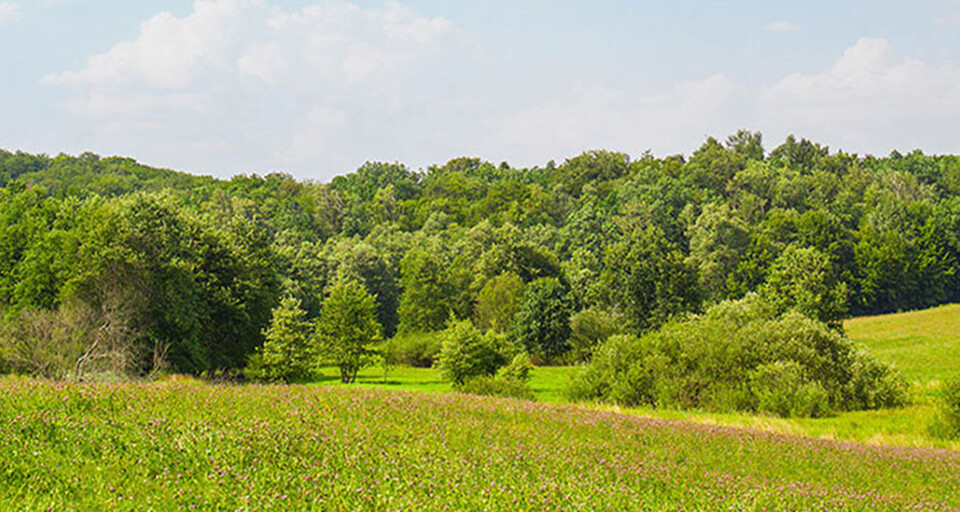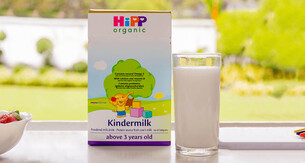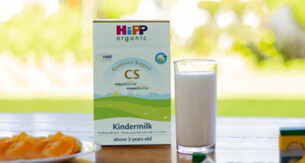The core principles of organic farming require a high level of animal welfare, respecting species-specific needs and providing the best conditions to ensure their good health, vitality and resistance to disease and other health problems. So what are the specific conditions taken into consideration when cows are certified as organic?
Organic formula - what makes it organic?

Housing and access to pasture
Our organic cows spend as much time as possible grazing on meadows where they can move around freely and eat lots of clover-rich grass. The weather conditions mean that there are times of the year when they won’t have access to pasture, but when this is the case our farmers make sure that the cattle have enough space and appropriate bedding in their indoor housing.
The Organic Regulations specifies an optimum density of indoor housing to safeguard the welfare of the animals. This ensures that they are provided with sufficient space to stand naturally, lie down easily, turn around, groom themselves, assume all natural postures and make all natural movements, such as stretching. In comparison, some non-organic cows never get to graze outside at all and spend all their time indoors (‘zero grazing’), perhaps in cramped, uncomfortable, poorly ventilated, unhygienic conditions.
Feeding
All organic cows must be fed on a 100% organic diet. Our cows are fed on as natural a diet as possible and not pushed to give more milk than they naturally produce. On some non-organic farms, cows will be bred to produce high volumes of milk which can badly affect their health and life expectancy, and they may not have any access to pasture or grass-based food at all.
An organic cow’s diet should be based on the maximum use of grazing pasture, and at least 60% of their diet must be grass-based – grass, roughage, fresh or dried fodder, or silage. Where possible this grass-based feed should come from the farm itself or in cases where this is not feasible, it should be produced in co-operation with other organic farms in the same region. They are not allowed to have any more than 40% of their food from other sources, i.e. concentrates.
All feed grains, forage, concentrates, supplements, vitamins, minerals, feed additives and carriers must be GMO free. Growth promoters and synthetic amino acids in feeds are forbidden.
Soil quality
The number of cows in each organic herd is limited with a view to minimize overgrazing, soil damage and erosion. (Incidentally, these smaller herds also mean that the cows also have names!) Organic farmers take good care of their soil to keep it rich and healthy by good soil management practices, helped along by the many earthworms and other minibeasts living in organic soils. Crops and animals are regularly moved around and special crops planted to help keep the land fertile. They use natural predators to control any insects or pests, and don’t use any artificial chemical pesticides which may be used by non-organic farmers. Some non-organic farmers rely on artificial chemical fertilisers to grow as much grass and crops as possible, and use chemical herbicides to control weeds, but these don’t necessarily produce healthy soil or support wildlife. Cows grazing on non-organically managed land are more likely to consume these chemicals and these can get into their milk.
Milk production and quality
Of course, to produce milk an organic cow needs to have had a calf. Once a year, usually towards the end of winter, the cow will be allowed to rest for 8 weeks before calving, and during this break she will not be milked. Once a calf is born, they are fed on natural milk, which is in contrast to a non-organic calf which might not be fed on natural milk at all and could be solely fed on a powdered milk replacement instead.
Organic dairy farming is not just about producing as much milk as possible - although organic cows produce less milk per year, they stay healthier and produce milk for longer than conventional dairy cows and their welfare and quality of life remains of paramount importance.
Milking usually takes place twice a day, once early in the morning and once in the late afternoon, and is usually done by machine. The milk is then chilled in a tank on the farm, before being collected by a milk tanker which comes to the farm every day or so, and takes the milk off to the processor for pasteurization or processing, until it is ready to be used in manufacturing organic milk.
More from: Quality
Chat with us on Messenger at m.me/hipp.ph




